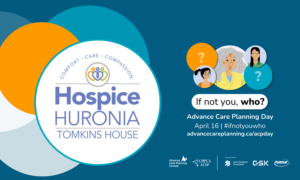By Dawn M. Guthrie and Nicole Williams, Wilfrid Laurier University
As the population ages, there is a growing number of people living with chronic, life-limiting illnesses such as Alzheimer’s dementia, organ failure and chronic lung diseases. People who receive palliative care (PC) tend to have cancer and a relatively short prognosis (less than 6 months). However, many people with other life-limiting illnesses could also benefit from a palliative approach to their care. PC is intended to provide optimum quality of life for both the individual and their family. Care that is provided earlier has the potential to improve overall quality of life, reduce symptoms, and fulfill the goals and wishes of the individual. Most Canadians would prefer to receive PC in their own homes and die at home surrounded by loved ones. However, we do not know very much about who receives palliative home care. We carried out a research study, in Ontario, to understand the needs, symptoms, and potential differences between those with a shorter prognosis (less than 6 months) and a longer prognosis (6 months or more).
This study used data that were collected with the interRAI Palliative Care (interRAI PC) assessment across Ontario completed by trained assessors using a laptop. The assessor then uses that information to develop a unique care plan for each home care client. The electronic assessment data can also be used by researchers, like us, who work with the interRAI assessments. The assessment includes questions related to the person’s mood and mental health, their spirituality, their memory and ability to make decisions, their ability to carry out daily activities (like dressing and bathing), and physical symptoms like pain and nausea. We looked at all the interRAI PC assessments that were completed between 2011 and 2018 which gave us information on a total of 74,964 people. These individuals were split into two groups. One group (64% of these individuals) had a prognosis of less than 6 months to live, and the others (36%) had a prognosis of 6 months or more.
In this group of 74,964 people, nearly half were 74 years or older, 50% were female and 63% were married or had a partner. Cancer was the most common diagnosis and was present for 83% of the people we studied. However, several other diagnoses were also common. Almost half of people had a diagnosis related to the heart or circulatory problems (46%). About 18% of people had a diagnosis related to the nervous system or their mental well-being (like dementia). Many people in our study experienced pain. For example, about 70% in both groups had severe pain or pain that they experienced every day. Around 30% in both groups had nausea and around 25% went to the emergency department at least once, over a three-month period. We also found that around half of the people in our study had caregivers who were at high or very high risk of caregiver burden. People who had a prognosis of less than six months to live, compared to those with a longer prognosis, were more likely to have fatigue, shortness of breath, and difficulty completing daily activities.
It can be challenging to know when to begin PC as some diseases are less predictable and prognosis can be hard to estimate. In any event, it is still important to consider beginning PC early in the illness as it can be provided in combination with curative treatments. This study found that those with a prognosis of six months or more experience some outcomes just as often as those who were expected to live for a shorter time. This points out that it is important to continually address all types of symptoms like pain, nausea, and caregiver burden for any individual with a life-limiting illness.
The needs of palliative home care clients, and their families, are complex. This study shows that while many palliative home care clients have cancer, some do not. It also highlights that people with a longer prognosis experience symptoms like pain and nausea that can affect their quality of life and that many caregivers are at risk of caregiver burden or distress. For this reason, it is vital to fully understand the needs of the person, and their family, so these issues can be addressed and improve the quality of life for all those involved.






